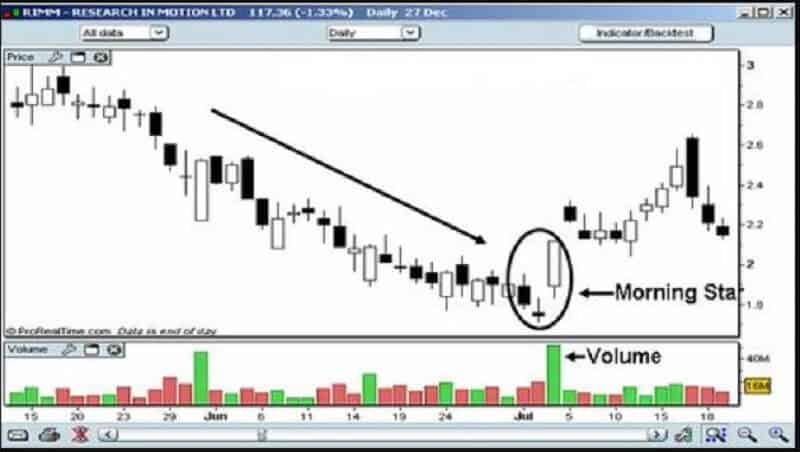
Some strategies can help you to identify trend changes even before they happen.
If you want to know how to identify trend reversal ahead of time, we’re sorry but it doesn’t exist. There is no trading system or methodology capable of doing that. The only thing you can do is to learn how to read the price action and identify potential zones where the market could reverse.
So, how to identify trend reversal? It appears when the direction of stock changes and goes back in the opposite direction. The examples of reversal are uptrends that reverse into downtrends and vice versa. What trend reversal tells us? First of all, the sentiment in the stock is changing. For example, an uptrend that reverses into a downtrend tells us that traders are taking profit from the overbought price of the stock.
On the other hand, when downtrend reverses into the uptrend shows the sentiment is changing to bullish. That means the buyers are boosting bids to reverse back into the bullish trend. Let’s examine several indicators that might help us to understand how to identify trend reversal.
Why is it important to know how to identify trend reversal?
The main importance lies in the fact that if you recognize the trend reversal on time, you’ll be able to exit the position in profit or at least, to protect your trade from extended losses. But the trend reversal also gives you a chance to profit if you trade in the opposite direction.
But there is a problem to recognize the start of the trend. We can spot the new trend only when it is already formed. It is visible after the new direction starts. The other problem is that you don’t see just one trend. Let’s say that the time frame you’re trading may have a trend that differs from the other on the lower or higher chart.
Use Moving averages to identify trend reversal
Traders broadly use moving averages to identify trend reversal and as alert of the “potential” start of a new trend direction.
Let’s say the price passes a moving average and goes above it, that could be a sign that an uptrend has just started. Hence, when the price goes below the MA indicator, the downtrend is starting.
For example, in forex trading, use two MAs, one slower and one faster. When the faster MA crosses the slower MA, it is a confirmation that the new trend is developing. But you have to be careful because technical indicators can lag prices. So, you will be late for any trend change. In the best scenario, you’ll recognize a new trend, not at the start, but very close to. Still, moving averages, particularly the 200 periods moving average, are helpful indicators that may show a trend reversal.
How to identify a trend ending?
Trends aren’t highways. You cannot just start the engine and drive from point A to point B. What we can do about trend reversals is to estimate its probability to happen.
For example, while you are trading in an uptrend direction, you can notice on your chart that something may show the market has a high possibility of reversing.
Bullish and Bearish – how to identify trend reversal?
An uptrend is bullish price development that proceeds to make constant higher highs and higher lows. A bullish reversal appears when the stock stops making higher highs and begins to make lower highs and lower lows. In other words, it reverses the direction from up to down.
A bearish trend reversal develops the same formations but inversely. In a bearish downtrend, the price action creates lower highs and lower lows. When the price ends forming lower lows and establishes a higher low and remains to rise with higher highs and higher lows, it is a bearish trend reversal.
Different time frames
How to identify trend reversal on different time frames?
The high and lows can differ depending on the time frame chart you use. Let’s explain this. For example, you use the 60-minute and 5-minute charts. In the 60-minute chart, you can see a range of lower high and lower low in a downtrend. But, your 5-minute chart can show the uptrend where higher highs and higher low candlestick closes.
This means, your 60-minute chart shows the overall constant trends but your 5-minute chart can show a different tendency. It shows moves back to the longer time frame resistance. Here are two possible scenarios. The price will return back down is one possible scenario. The other scenario could be, the price may continue to bounce and reveal the early trend reversal attempt. The time frame you are trading is very important. It has to be aligned with a more extended time frame trend.
How to trade trend reversal
You can trade trend reversal at different points during the reversal process.
The first important thing that you must keep in mind is to regularly maintain trailing stops. It is important in case the reversal turns out to be a fake. Usually, trend reversal starts as a move that fails to bounce but finally succeeds in reversing the trend. The point of reversal is a break: breakout or breakdown. It is followed by the opposing trend direction. The uptrend will ultimately top.
As the price tries to bounce again, it is faced with greater selling pressure. So, it starts to produce lower highs and lower lows to finally break support and forms the downtrend.
Of course, this trend reversal has to be confirmed. If you enter the position in anticipation of a reversal without confirmation, that may expose your trade to a risk of getting a fake signal. Also, your stop-loss will be triggered and you’ll exit the trade without profit.
If you enter the trade based on the confirmation, your entry point can be too far, so you’ll profit a little. Also, you could get stopped low on the reversion.
How to have a proper execution?
After you get the confirmation, wait for the first attempt and enter the trade close to the reversal support zone. You’ll have enough time to enter the trade if you use some of the popular methods to confirm the trend reversal.
For example, you can use trend lines. They are a simple method of visually recognizing trends and reversals. You’ll need to draw the trend lines ahead of time and to actively monitor. It’s simple to draw the trend line. Just connect the highest high and the lowest high to make the upper trend line. To draw the lower trend line, connect the lowest low and the highest low.
Trend lines could be diagonal or horizontal. If both trend lines are moving up or down together diagonally, they are in an uptrend or downtrend. How to identify trend reversal occurs? If the opposite trend line of the trend gets breached and then developed in higher highs and higher lows we have downtrend reversal in a breakout. Hence, the lower highs and lower lows represent an uptrend reversal.
In case both trend lines are horizontal, it is a consolidation that will finally end as a breakout or breakdown.
Bottom line
There is no system that can tell you how to identify trend reversal with total precision. The only chance we have is to watch the price action and identify the potential zone where the market could reverse. So, we have to identify the weakness in the trending move, and strength in the retracement move. The also important signal is a break of support and resistance. Some other indicators could be a break of the long-term trendline, or if the price is coming into the higher-timeframe formation, or goes parabolic. Also, pay attention if the price is overextended.
The more concentrated circumstances there are, the greater the possibility of a trend reversal.




